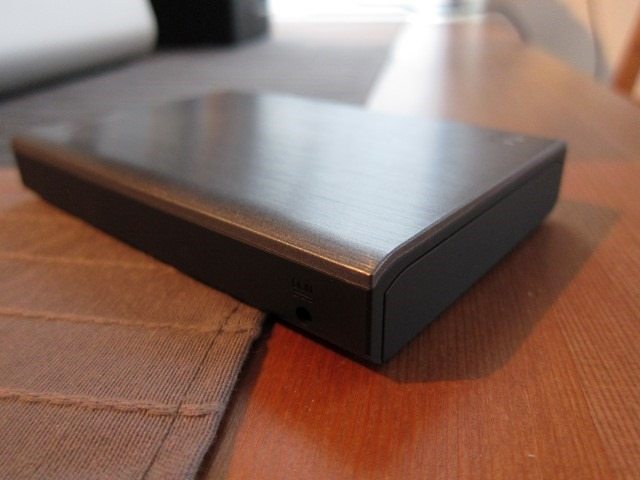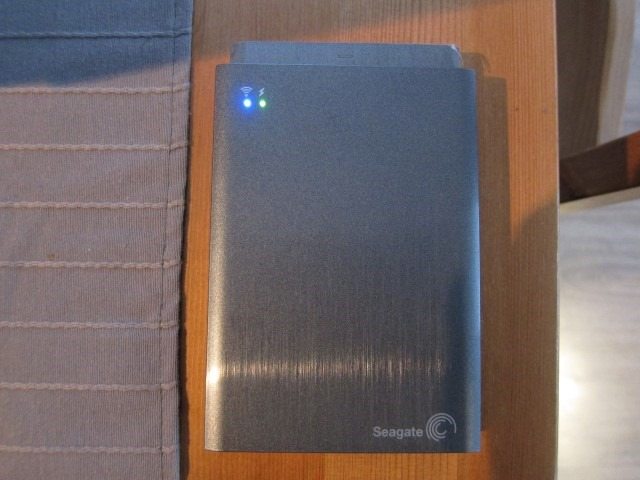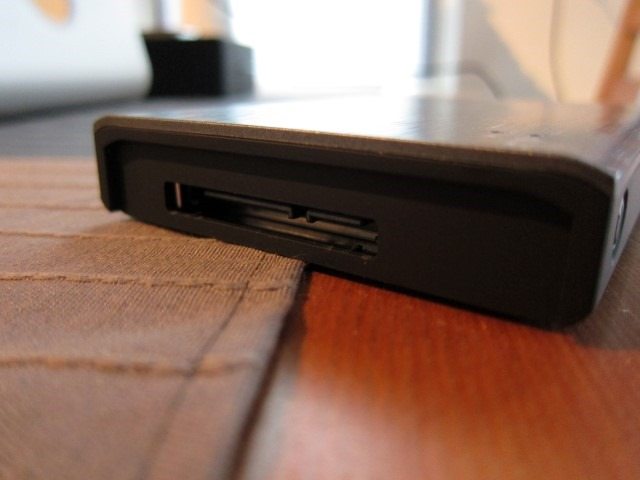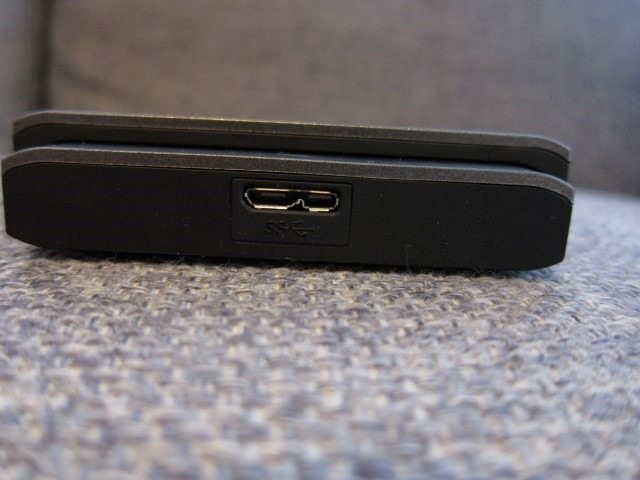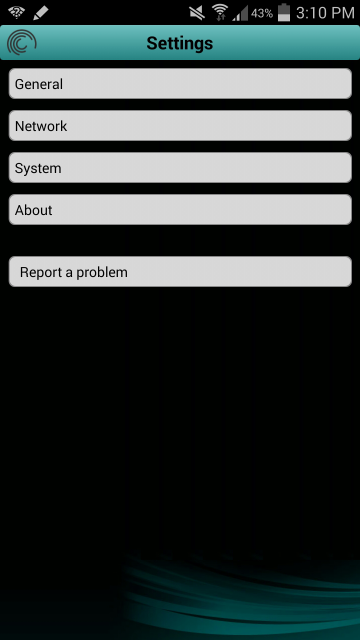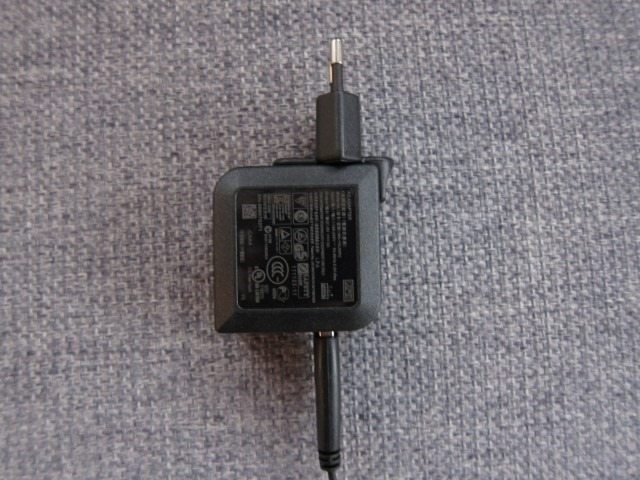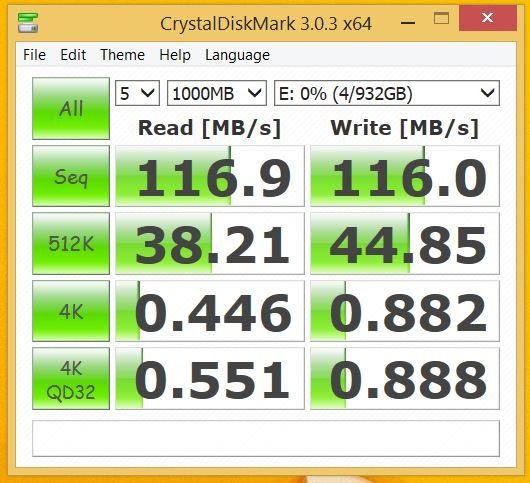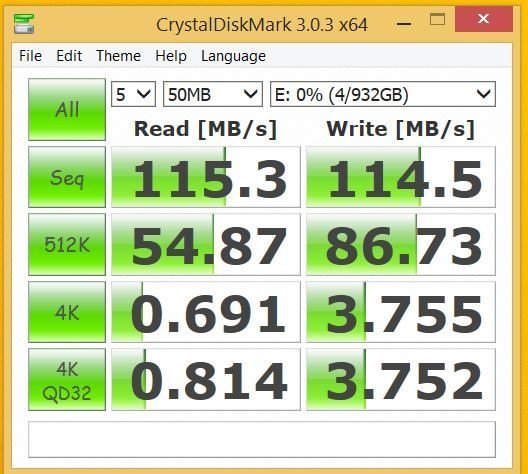I’ve been trying to go wireless on as many devices as possible, simply because it makes things a whole lot tidier. So when Seagate made the USB cable optional on their Wireless Plus portable hard drive, I had to give it a try. Certain types of devices like for example home theater speakers still need the trusty old cable to get the most out of them. Can the same be said for the portable hard drive?
Specifications
Interface
WiFi, USB 3.0
Capacity
1TB
Width
89.0mm
Length
127.0mm
Height
19.9mm
Typical Weight
0.256 kg
Colour
Grey
Model Number
STCK1000200
Battery Life
Up to 10 hours
The Seagate Wireless Plus
Take the traditional portable hard drive with its now standard USB 3.0 connection, add a rechargeable battery and Wi-Fi and you get Seagate’s Wireless Plus. The idea behind the drive is that you can use it like any standard drive by connecting the USB cable to your computer which also powers it. But things don’t end there: by removing the cable and turning on the power button, the drive runs on its internal battery, allowing it be used without any external power source, making it truly portable. Using the 2.4GHz wireless-N single band Wi-Fi variant, it enables other Wi-Fi devices to connect to it, allowing you to download, upload and even stream data. This can be done through your mobile device’s browser (by going to www.seagatewirelesspluss.com) or the Seagate Media app, available on Android, iOS and even Samsung SmartTV’s. The drive allows for up to 8 devices to be connected, but up to 3 can be streaming HD videos at the same, which is a pretty amazing feat. This also means that Seagate has given the drive plenty of horse power, limited only by the Wi-Fi transfer speeds provided through the use of the 2.4GHz wireless-N standard, which is about 150Mbps. While this throughput shared by 3 devices at the same should be enough for most user, we would have liked to see the addition of the less crowded and future proof 5GHz frequency used in combination with dual band for more throughput. 150mbps should be plentiful for streaming and basic file transfer, but for larger files and faster transfer speeds, USB 3.0 is still your best friend.
The drive came with all the basics to get things working, including the USB cable and charger, but also nice extras like the interchangeable charger connectors for the serious world traveler. Strangely missing was a carrying case or pouch, something you’d expect from a device in this price range. Also when you consider that this drive is meant to be portable, being tossed in backpacks and suitcases where it’s likely to get scratched and damaged, the lack of case is simply unforgiveable. Even a quick search on the Seagate site reveals that they simply didn’t create a matching case or pouch for those that are willing to pay for one. If you ask us, one should have been included.
Design
The result of all of this Wi-Fi and battery goodness is a drive that’s noticeably chunkier than your average portable drive. It also weighs a bit more, but that’s barely noticeable. With the extra features in mind we consider the extra heft and thickness to be a fair trade off. In fact, in my daily use I never felt the difference in weight. You will however notice the thickness, as it simply wasn’t as pocketable as the latest ultra-portable drives like Seagate’s own Backup Plus Slim, but it’s also not a night and day difference. While the Wireless Plus isn’t as slender as other drives, those other drives simply don’t offer the same amount of features and flexibility.
Despite these chunky dimensions Seagate still managed to create a drive that looks quite good, aided by its faux dark Grey brushed metal look on the top of the drive. From a distance it looks luxurious, but a closer look reveals its plasticky origins. Even so it looks great, giving the device a premium look, well at least until you tap on it, revealing a plasticky and hollow sound. The rest of drive uses a soft touch plastic that feels great in the hand and is extremely grippy.
On the top right side of the drive you’ll find a Blue Wi-Fi and Green power led lights. On the right side there’s the power connector and on the left you’ll find the power button. The entire drive rests on four rubber feet. On one side of the drive there’s a cover revealing what looks like a SATA connector. An included adapter can be connected to this port adding a USB 3.0 connector. The adapter doesn’t stand out as much as it’s done in the same brushed metal look, but there’s no hiding the fact that it adds extra inches to an already thick drive.
Usage
Our testing was done using the Samsung Galaxy Note 3(running Android KitKat 4.4), the Note 10.1 2014 edition tablet and a Samsung F8000 SmartTV.
We kind of expected the drive to work like any other Wi-Fi device: connect to it to your wireless network transmitted by your router and then other devices would be able to connect to it using the same Wi-Fi network. But that’s sadly not how this drive works. It’s especially due to the level of complexity involved during setup, that we can only recommend it to the more advanced users, at least if you’re planning on using the wireless functionality. You can still use it purely like any standard portable drive, but in that case we’d recommend saving the extra cash and looking at a more traditional option. Despite knowing quite a bit about networks and mobile devices, I found the entire setup process more complex than it should have been. Seagate should find a way to makes things a bit simpler. Ideally I would love the ability to access data on the drive, without the need disconnect from my wireless network. Once you do get things going the drive works without a hitch, is very convenient and it’s simply impressive seeing how a single fairly compact drive is streaming to several devices at the same time.
To connect to the drive you have to download the app, disconnect from your wireless network and connect to the Wi-Fi signal being broadcasted by the drive itself. My Note 3 had a lot trouble connecting to the drive, simply because this phones tests the internet connection once it connects to Wi-Fi signal and if it doesn’t and if it’s unable to connect to the net, it will try to connect to another network. It was only after going into the advanced network settings and turning "Auto network switch" off I managed to get things going. Most users wouldn’t think of this and will bring the unit back to the store, thinking it’s a faulty unit. This is one clear example reason why the setup process could and should have been much easier. Once connected to the drive you’re now able to run the app and start downloading, uploading and even streaming data. There is however one big catch and that’s when your connected to the drive you don’t have access to the internet. On the plus side you don’t need internet to wirelessly access data on the drive, for example when you’re in your car.
Its only when you go to the app and connect in what they call "concurrent mode" you get access to the internet. This basically means that the drive itself searches and connects to your router and shares the internet with your device. If the initial complexity of connecting to the drive itself was a hurdle, connecting to the internet adds another level of complexity. On the plus side, once you’re connected in concurrent mode, you can set so that when you connect to the drive, it will automatically connect to the router giving you instant access to the net. When you’re done using the drive there is the hassle of having to go to your network settings again, to disconnect from the drive and connecting back to your Wi-Fi. Way too many steps. Overall we consider not only the setup process complicated, but the daily use in wireless mode is far from the ideal “turn on and use” scenario. This is the main reason why we’d recommend the drive to the more advanced users and why it doesn’t come close to perfect. Once you do get things running, it’s pretty smooth sailing from there and handy little gadget to have around.
The app works as advertised allowing you to manage, upload, download or stream your data and works pretty well. We never experienced any hiccups, errors or crashes during our testing indicating that Seagate created a solid and dependable app. We’re however not so excited about the app’s lackluster design that looks dated and doesn’t follow Google’s flat design guidelines called “Holo.” The app only allows you to upload files located in the device’s internal memory, but strangely you can’t access and upload files located in the memory card, which is a major downside. We also found it strange that you can select individual files, but not entire folders, which one one of the most basic actions when it comes to file management.
What I did love is that you don’t necessarily need the app. Once connected to the drive, just point the browser to www.seagatewirelesspluss.com and you’ll pretty much get every single option the app provides. One weird issue is that when it detects a mobile browser it still give you the same features as the app, except for the ability to upload files. I solved this by enabling desktop mode in the phone’s mobile browser and voila, I had now the ability to upload data to the drive.
Both the app and web based app have a comprehensive list of settings to manage your drive, most noticeably are the ability to secure wireless access with a password, rename it and reset the drive. I also loved the fact that the unit automatically downloads the latest firmware when you connect in concurrent mode and will update the next time you turn of the unit. Perhaps most importantly, the software allows you to choose whether you stream using the inter player or the device’s own media player. This is important as the app’s player supports a limited amount of codecs. Using the device’s own player open up the ability to play more formats.
Performance
For a real world test I copied large 5 GB files in Windows Explorer connected to a USB 3.0-enabled SSD-equipped laptop. The drive was capable of a speedy sustained write speed of about 115 MB/s. Using CrystalDiskMark we again got a 116 MB/s read and write speeds, making the Wireless Plus a capable and very fast wired drive.
Wireless performance was equally fast being able to stream 3 HD streams of The Walking Dead to the phone, tablet and TV, all at the same. More impressively was that this was done without a single stutter and audio was always in sync. It doesn’t seem to start immediately as there appears to be some level of buffering going on.
When it comes to battery, we managed to get 10 hours and 14 minutes of battery life, supporting Seagate’s claims.
From a performance point of view the Wireless Plus gets a perfect score, performing equally good as wired as well as wireless drive. The only way we can think we could improve its performance is if Seagates makes it a wireless SSD drive. But this would make it ultra-expensive. We would also like to see the support for dual band Wireless-N and the 5GHz frequency. In conclusion, we can say that the Wireless Plus is the best of both worlds being a solid performer both wireless as well as a wired drive.
Conclusion
The Seagate Wireless isn’t perfect, but scores big where it really matters: both wireless and wired performance, even living up to the 10 hours battery life claim. From a design point of view the Wi-Fi and battery goodness result in a drive that’s noticeably chunkier than your average portable drive, but yet still manages to look great with a beautiful faux brushed metal finish. The USB cable adapter does however make the drive longer and we simply can’t forgive Seagate for not including a pouch or case at this price range. Despite its chunky dimensions and plastics, the Wireless Plus has a premium look. The app works great, but looks dated and doesn’t follow Google’s design guideline. Seagate should go back to the drawing board and give the app a fresh new design,adding the ability to upload files on the memory card and select folders. In the end we simply loved this drive, but it all comes down to the somewhat complicated wireless setup and wireless use. It’s a great and ultra-fast, albeit chunky wired portable drive. The lack of a more easier setup and use on the wireless side of things, we find it hard to recommend to the average user. The more tech savvy users should seriously consider this drive. We give it a 8.5 out of 10.







